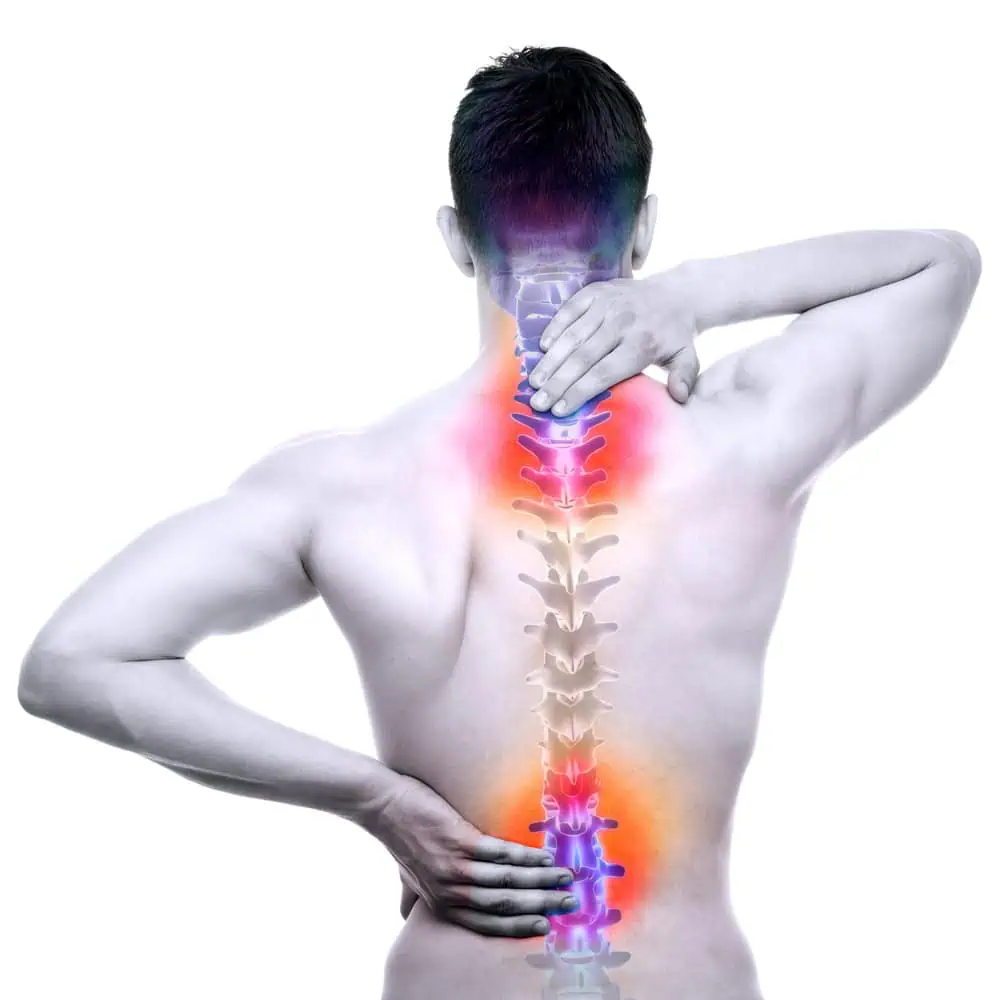How Common is Back Pain?
While it is estimated that four out of five people will experience back or lower back pain at some point in their lives, back pain that lasts longer than a few weeks is not normal and it may be necessary to seek advice from lower back pain doctors.
Back Pain Symptoms
Back pain symptoms may include feelings of muscle ache, stabbing or shooting pain, stiff or limited flexibility in the back or lower back, inability to stand with proper posture and radiating pain down one or both legs.
Where is my back pain coming from?
Muscle Strains
Did you know that muscle-related pain is one of the most common reasons for overall back pain? It’s true. Muscle-related back pain can be caused by improper lifting techniques, overuse, poor posture or a sudden awkward movement or fall.
Bulging or Herniated Discs
Spinal discs are soft cushions between vertebra. Sometimes, the soft jellylike substance inside the disc can bulge out of place or rupture, putting pressure on the surrounding nerves causing back pain. Disc related pain can be caused by an injury. Interestingly, some people who have bulging or herniated discs will never experience any back pain.
Sciatica
Sciatica refers to back pain that stems from the sciatic nerve, a large nerve extending from the lower back down the back of each leg. Sciatica is not a disorder, but a symptom of another underlying problem, such as a spinal stenosis, a pinched/irritated nerve in the lower back or a herniated disc.
Read more: Yoga for Sciatica Pain Relief
Other Painful Conditions
If you have spinal stenosis, degenerative disc disease, scoliosis, compression fractures, arthritis or osteoporosis you may also experience bone and joint pain in the back. These conditions can be treated with conservative, minimally invasive procedures by our back pain and lower back pain doctors.
Risk Factors for Back Pain
There are a few factors that can increase your risk of developing back or lower back pain, such as: smoking, obesity, age, physical labor, sedentary work and depression.
Preparing for Your Appointment with APM Back Pain and Lower Back Pain Doctors
Before you meet with your back pain relief doctor, take note of some important facts.
- Is your back pain the result of an injury?
- What movements increase or decrease your back pain?
- What are the symptoms you have been feeling?
- How long have you had this back pain?
- What does your back pain feel like? Dull, aching, stabbing or shooting?
- What type of work do you do?
- What treatments or medications have you already tried to resolve your back pain?
Diagnosis Testing
To help determine the cause of your back pain, your provider may ask you a lot of questions and ask for some diagnostic testing. Learn more about what to expect when you visit an APM back pain and lower back pain relief doctor.
Some common diagnostic imaging includes:
X-ray – An X-ray shows the alignment of the bones in your spine and whether you have any broken or arthritic bones that may be causing pain. Always bring your X-ray images with you to a doctor’s appointment to help your doctor understand your full history.
Magnetic resonance imaging (MRI) or computerized tomography (CT) scans – These tests show images of bone, muscle, tissue, nerves, blood vessels, tendons and ligaments. These tests can show disc herniation, muscle tears, ligament problems and can help your doctor understand your back pain.
Nerve Studies – Electromyography (EMG) is a test used to study nerve and muscle function. There are two parts to EMG testing: a nerve conduction study and a needle exam for muscle testing. The nerve conduction study involves stimulating the nerves at different points with small electric stimulation so their function can be measured. The needle exam involves inserting very fine needles into several muscles. These needles pick up both normal and abnormal electrical signals given off by a muscle.
The EMG can provide information about the extent of nerve and/or muscle injury and can give some indication as to whether the damage is reversible. An EMG may be performed when the patient has unexplained muscle weakness to distinguish if the problem is in the muscle or if it due to nerve disorders. The EMG can detect abnormal electrical activity of muscles and nerves that can occur in many diseases and conditions, including muscular dystrophy, muscle inflammation, pinched nerves, damage to nerves in the arms and legs (peripheral nerve damage), multiple sclerosis and carpal tunnel syndrome.
Back Pain Treatment Options:
There are a number of treatment options that your back pain doctor can perform to help reduce back pain, which include:
- Epidural Steroid Injection
- Discogram
- Facet Joint Injection
- Trigger Point Injection
- Radiofrequency Neuro Ablation
- Minimally Invasive Posterior Facet Fusion
- Sacroiliac Joint Injection
Lower Back Stretches to help with Lower Back Strain
What Can I do to Help Back Pain?
“6 Stretches to Help Back Pain” includes tips and tricks you can use at home and at work to help you reduce your back pain. Download your own copy now!










